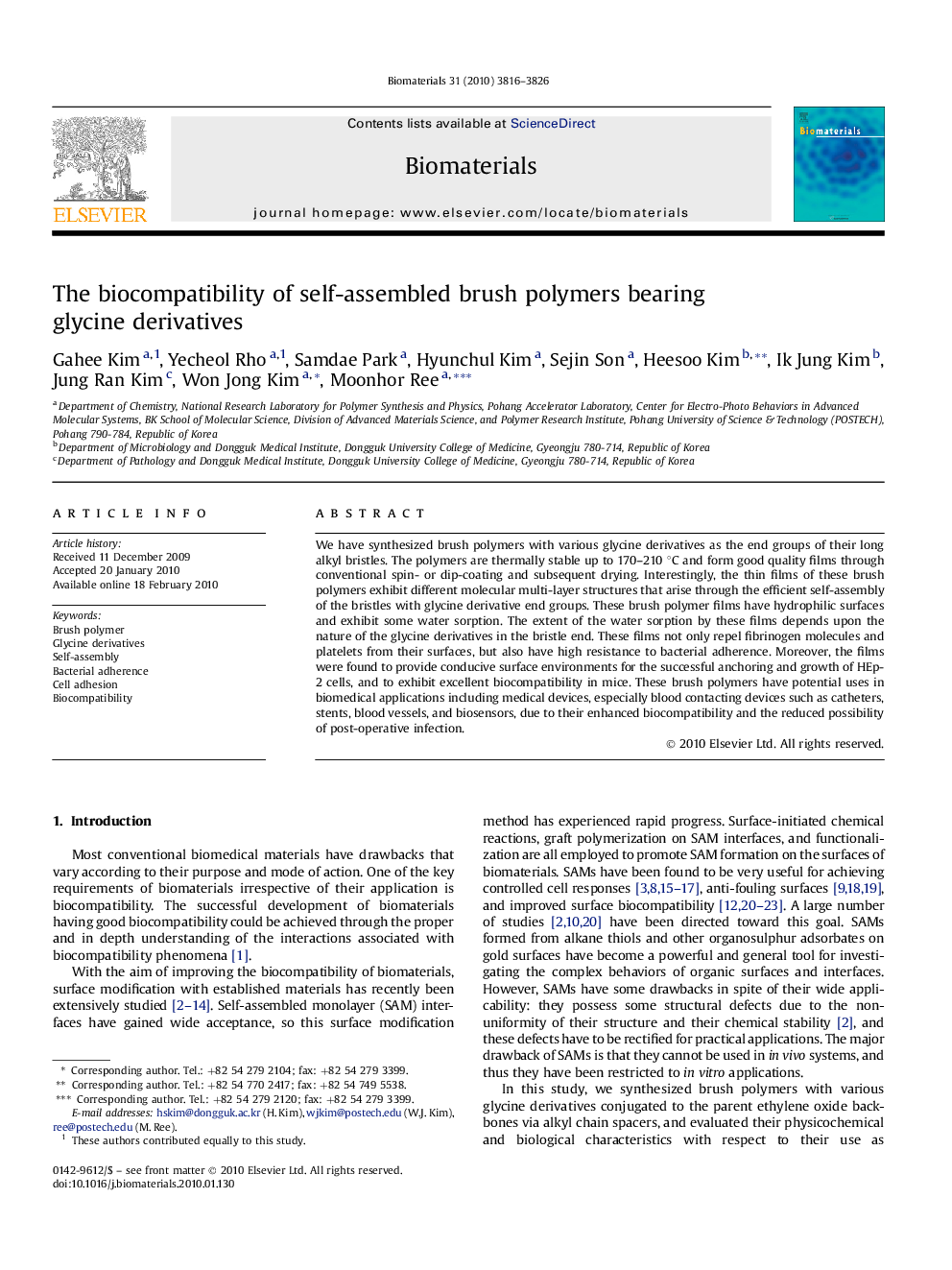| Article ID | Journal | Published Year | Pages | File Type |
|---|---|---|---|---|
| 9087 | Biomaterials | 2010 | 11 Pages |
We have synthesized brush polymers with various glycine derivatives as the end groups of their long alkyl bristles. The polymers are thermally stable up to 170–210 °C and form good quality films through conventional spin- or dip-coating and subsequent drying. Interestingly, the thin films of these brush polymers exhibit different molecular multi-layer structures that arise through the efficient self-assembly of the bristles with glycine derivative end groups. These brush polymer films have hydrophilic surfaces and exhibit some water sorption. The extent of the water sorption by these films depends upon the nature of the glycine derivatives in the bristle end. These films not only repel fibrinogen molecules and platelets from their surfaces, but also have high resistance to bacterial adherence. Moreover, the films were found to provide conducive surface environments for the successful anchoring and growth of HEp-2 cells, and to exhibit excellent biocompatibility in mice. These brush polymers have potential uses in biomedical applications including medical devices, especially blood contacting devices such as catheters, stents, blood vessels, and biosensors, due to their enhanced biocompatibility and the reduced possibility of post-operative infection.
